Evolving pensions landscape drives data analytics revolution
Emerging risks and new investment strategies mean DB schemes need to have greater visibility and control over their pension plans. Against this backdrop, Simon Robinson at Moody’s Analytics explains how the ever-evolving pensions landscape is driving data analytics revolution.
Compared to even a decade ago, the UK’s defined benefit pension schemes look very different today. Over the past ten years we have seen significant changes in regulation, investment strategy, and members’ benefits, with schemes shutting to new entrants and future accrual. Many companies and schemes now have a clear focus on an ‘endgame’ where members’ benefits are secured. But, while for the very largest this is probably still many years off, this change has spurred an evolution in management of pension schemes and a greater desire for technology solutions to support this change.
Previously, most pension plans were still heavily invested in equities, resulting in big short-term fluctuations in funding levels. Traditionally, schemes were largely dealt with by a pension manager supported by consultants and asset managers. However, this has evolved in recent times, with investment strategies changing substantially and in-house teams on both the company and scheme side increasing in size and expertise.
The landscape for pension scheme risk management has also dramatically changed over that time. For many, this has resulted in a much more closely managed risk position, perhaps looking more like an insurer’s annuity book. For example, one trend is for schemes to follow a cashflow driven investment (CDI) strategy where schemes look to closely match expected liability payments with cashflows from the assets held. This shifts the risk management approach towards a much greater focus on the default risk of the assets. The reality is that the risks pension schemes face have migrated from big swings in equity markets to less likely but big impact risks like defaults, or more complex and subtler ones such as when asset cashflows are received.
The more sophisticated pension schemes are also taking a more holistic view of how their schemes would respond to different risk events. By focusing on a broader range of risk measures, they are ensuring their schemes are less likely to be impacted by any unexpected issues that emerge. There is an increasing demand on trustees in terms of both managing data and risks and ‘being seen’ to manage them, and smart technology is now an essential part of how schemes achieve this.
Many schemes are seeking visibility across their entire portfolios. For instance, a scheme might have as many as thirty or forty different asset managers. While those individual asset managers may disclose information about their fund, schemes need to have an aggregate view to ensure they gain more insight into what is going on at a broader level. This enhanced picture means they can better spot concentration risks at a portfolio level, or, with the growing focus on ESG and climate risk, allow companies to see if they have any unwanted off-balance sheet exposures that they don’t know about.
Large schemes are currently collecting carbon emissions data from all their asset managers with the challenge of both aggregating it and dealing with inconsistencies. Managing assets against liabilities is well established now but the approach needs to encompass new considerations consistently. Ultimately, if you don’t have an overarching entity-wide view of the pension scheme, both in terms of assets and liabilities, there are many ways you can get tripped up.
Against this backdrop, some pension schemes are changing the way they approach resourcing, too. A number of larger schemes have scaled up internal capabilities both in terms of in-house company teams and pension scheme executives on the trustee side. One benefit of having larger internal teams is that schemes can use external consultants effectively and efficiently. Particularly so in areas such as idea generation, solving challenges, reviews, or helping to scale up resources for larger projects, rather than for more operational work that can easily be handled in-house, for instance. Central sources of data and analytics provide control and can help facilitate this new model of working.
Companies and trustees of large schemes have recognised the importance of having a greater ownership over the operation of their schemes, which can run to a balance sheet of billions of pounds. In-house expertise that has access to data and analytics means schemes have oversight of the information they need, when they need it, without being beholden to any one third party. The change in governance structures and growth in pension scheme personnel over the past decade has created an opportunity for the most forward-thinking schemes to embrace holistic analytics tools, to give them greater control over their data and allow them to more effectively manage their schemes – ultimately enabling better decisions and achieving better outcomes for all stakeholders.




